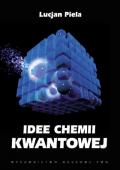PROFESSOR LUCJAN PIELA
In 2001 he has been elected an associated member of the Belgian Academie Royale des Sciences, des Lettres et des Beaux-Arts, and in 2004 a member of the European Academy of Sciences.
Main scientific activity of Professor Piela is focused in three domains:
- the long-range forces in molecules and polymers
- the global minimum problem in mathematics
- molecular electronic devices.
- The long-range forces in molecules and polymers
Any theory of regular polymers (i.e., exhibiting a periodic symmetry) has to take into account all particle interactions. Long-range interaction of the unit cells (the periodic structure is composed of) turned out to represent a serious numerical problem (with an effort increasing exponentially with polymer size), since the interactions of a reference cell with the rest of the polymer decayed very slowly. Professor Piela together with his Belgian colleagues (Jean-Marie Andre, Joseph Delhalle, Jean-Luc Bredas) converted this problem to a very simple one [L.Piela, J.Delhalle, Intern.J.Quantum Chem., 13, 605 (1978), J.Delhalle, L.Piela, J.-L.Bredas, J.-M.Andre, Phys.Rev. B 22, 6254 (1980)]. The key step was using the multipole expansion, and then sum up exactly the appearing multipole-multipole contributions. The multipole expansion has been used in the intermolecular interaction theory, but Piela applied it for the first time to a single molecule.
Lucjan Piela and Leszek Stolarczyk pointed out that most multipole expansion applications reported in the literature were coordinate-system dependent. The authors have proved a theorem indicating how the multipole expansion has to be modified to remove such a dependence [L.Z.Stolarczyk, L.Piela, Intern.J.Quantum Chem., 15,701 (1979)]. The obtained modified multipole expansion gave results invariant also with respect to the arbitrary choice of the unit cell. Only the corrected - not the original one - multipole procedure possesses this property. Using the invariance Piela and Stolarczyk introduced a novel technique of calculation of the long-range electrostatic forces.
When the energy band gap is non-zero, the exchange energy is of the short-range, while for the zero gap (i.e. for metals) the exchange almost suddenly becomes of the long-range character. Piela with his collaborators explained this phenomenon by showing why the gap plays so critical role in the range of exchange interaction [L.Piela, J.-M.Andre, J.Fripiat, J.Delhalle, Chem.Phys.Letters, 77, 143 (1981)].
Paper by R.A.Wheeler, L.Piela and R.Hoffmann on calculation on oligomers has been highlighted in Nachrichten der Chemie, Technik und Laboratorium 37(1989)116 as ,,significant advances in inorganic chemistry for 1988". - The global minimum problem
Global optimisation of a function, or searching for the optimum solution, is of importance in virtually all sciences, technology, economy etc. Piela, together with Jarosław Kostrowicki and Harold Scheraga, introduced a concept of a deformation of the energy hypersurface [L.Piela, J.Kostrowicki, H.A.Scheraga, J.Phys.Chem.93, 3339 (1989)]. In all other methods the target function (the hypersurface) was kept intact. The strategy behind the deformation was the following: deform the target function as to the number of its stable conformations decreases dramatically (sometimes to a single one), find much easier the new global minimum of the deformed function, then reverse the deformation gradually and follow the trajectory of the global minimum conformation until the undeformed target function is reached again. The method turned out to be able to obtain the global minimum for the widely accepted global optimisation test functions set either in the shortest time, or analytically, without any computations [J.Kostrowicki, L.Piela, J.Opt.Theor.Appl., 69, 269 (1991)].
The idea of deformation is based on a destabilisation of all minima of a function by introducing smoothing techniques (Diffusion Equation Method, DEM, distance scaling method, shift method, also related to them: Self-Consistent Electrostatic Field, Self-Consistent Multi-Torsional Field - all designed by Piela and coworkers). The most widely known DEM method with the deformation parameter t often ends up at a simple analytical formula for the deformed function. The deformed function is much smoother than the original one. This leads to identifying the parameter t as time even for mathematical functions to be minimised with no relation to physics or chemistry. As shown by other authors the DEM method is related to several equations of physics: Schrödinger equation for time evolution of quantum systems, Bloch equation for the temperature evolution of the canonical ensembles, Smoluchowski and Fokker-Planck time evolution in statistical thermodynamics, time average over trajectories in molecular dynamics, etc. Professor Piela has shown that all equations that emerge in the global optimisation procedures based on these phenomena are particular cases of a more general mathematical scheme [L.Piela, Collect.Czech.Chem.Commun., 63, 1368 (1998)]. - Molecular electronic devices (mnemon)
Professor Piela (together with Leszek Stolarczyk) proposed in 1984 a new kind of isomers. The isomers will differ by the electronic charge distribution rather than the nuclear framework as all the others do. According to that hypothesis some donor-acceptor oligomers may exhibit long-living isomeric electronic metastable states. The states would result from a cooperative effect of successive electron transfers from several electron donor to electron acceptor moieties of the molecule. Professor Piela and Anna Jagielska have proved by ab initio calculations that indeed in some substances a single electron transfer requires a considerable amount of energy, while a few such transfers need negligible energy. This creates a barrier separating the isomers and makes them long-living and therefore observable. Currently, Professor Piela is leading a major, interdisciplinary project (Mnemon Project) in Poland aiming at synthesis of these strange molecules. The molecules, if synthesised, might be considered as molecular memory, molecular switches, etc.
Professor Piela serving as a dean of the Chemistry Department of the University of Warsaw has introduced profound changes described in L.Piela, "Management in Science - A Case Study", VII Annual Meeting of the European Association of Deans of Science, Wrocław, Poland, 1997]. He loves to paint, see the attached paintings.






